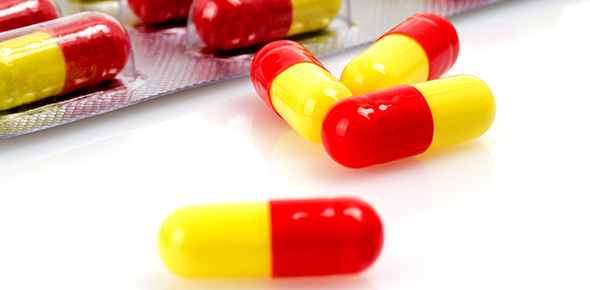Related Flashcards
Related Topics
Cards In This Set
| Front | Back |
|
Blood
|
Primary function is to transport nutrients throughout the body. Also prevents toxic buildup in the body by providng a transportation medium to remove waste products.
|
|
Plasma
|
Straw colored liquic portion of blood. Consists of about 91.5% water, along with over 100 different solutes ( nutrients, hormones, nitrogenous wastes, respiratory gases, and electrolytes). Plasma proteins made by the liver are the most plentiful solutes.
|
|
Erythrocytes
|
Red blood cell. The only human cells without a nucleus. Live 120 days.
|
|
Hemoglobin
|
Iron protein in erythrocytes.
|
|
Leukocytes
|
WBCs, crucial ot our defense against disease. The circulatory system transports them to various areas of the body where they are needed to mount inflammatory or immune responses. Fewer in numbers than erythocytes and have nuclei.
|
|
Thrombocytes
|
Platelets, smallest elements in blood. Initiate blood clotting when injuries occur and help to close tears in damaged blood vessels. Less than half the size of red blood cells, and Live approximately 10 days.
|
|
Blood clotting/ coagulation
|
Happens when platelets trigger chemical reactions that result in a release of protein called thromboplastic
|
|
Erythr/o, erythr/o/poiesis
|
Red, formation of red blood cells (formation/production)
|
|
Hem/o, hemophilia
|
Blood, (attraction for) group of hereditary bleeding disorders marked by definciencies of blood clotting proteins.
|
|
Hemat/o, hematoma
|
Blood, localized mass of blood confined to an organ, tissue, or space, caused by a break in a blood vessel.
|
|
Leuk/o, leukocyte
|
White, white blood cell.
|
|
Myel/o, myelosuppression
|
Bone marrow, suppression of bone marrow function.
|
|
Thromb/o, thrombolysis
|
Blood clot, dissolution of a blood clot.
|
|
Aniso- aniso/cyt/osis
|
Unequal, dissimilar, abnormal condition of the blood characterized by excessive red blood cells of variable and abnormal size.
|
|
Mono-, mono/cyte
|
One, relatively large mononuclear leukocyte. (cell)
|







